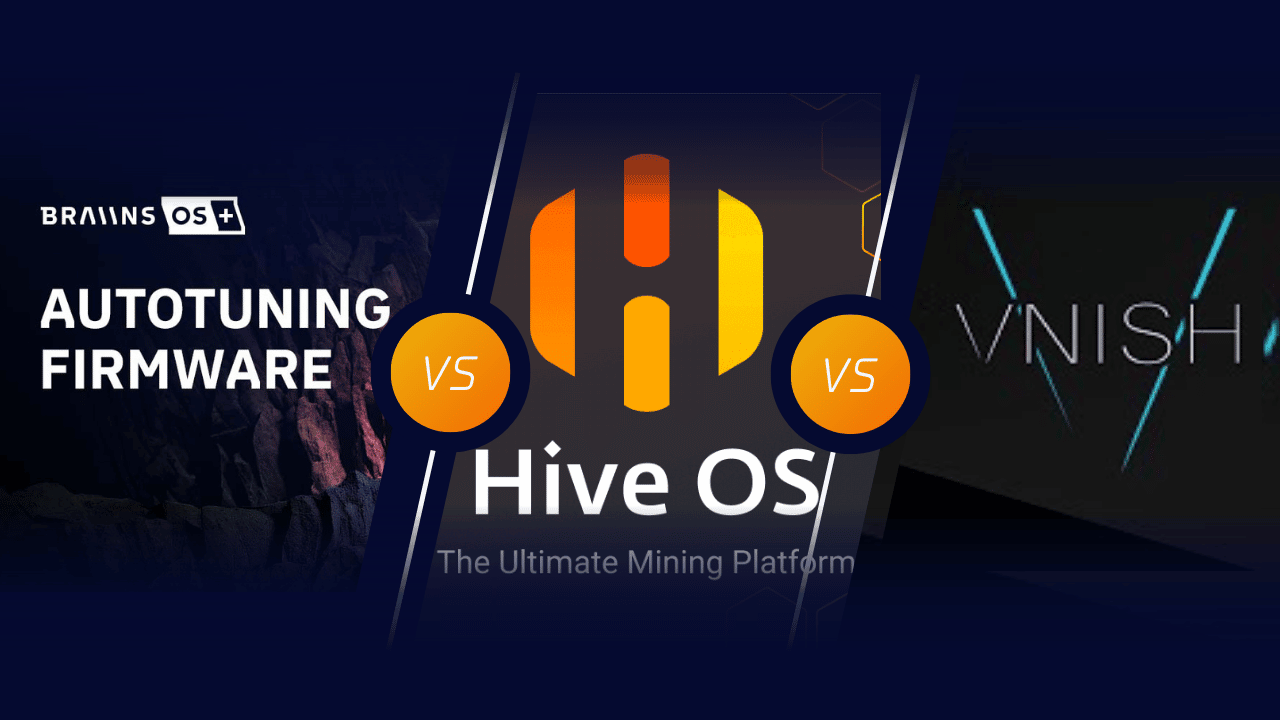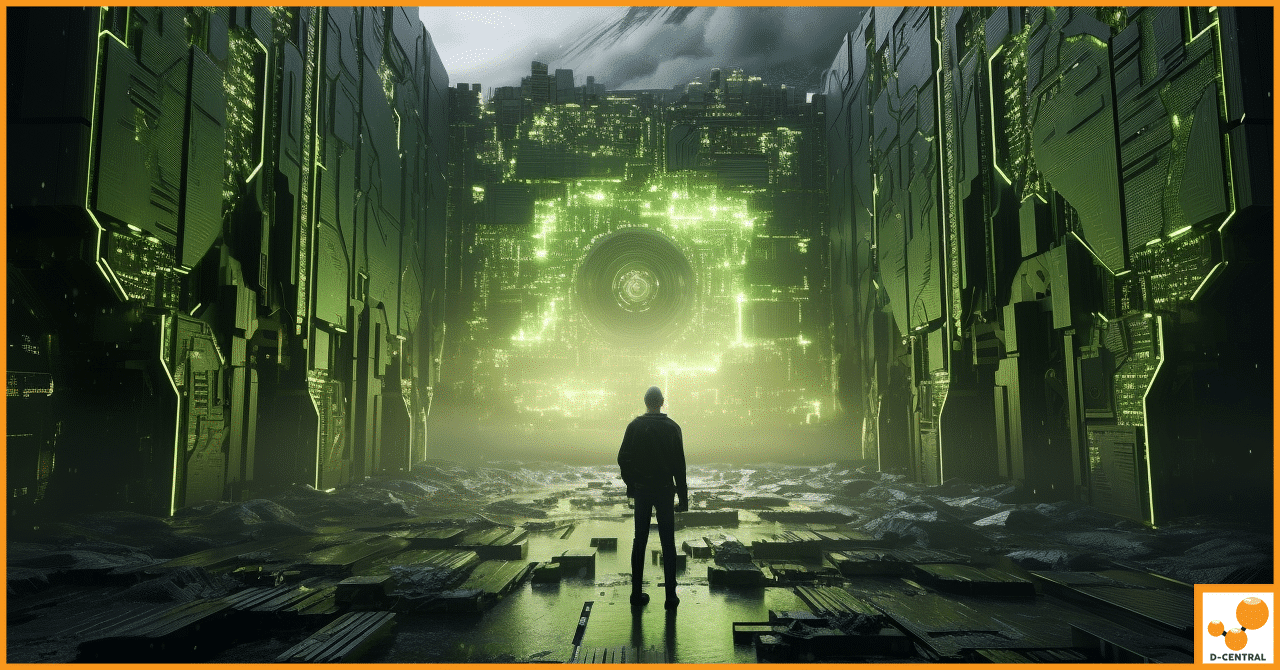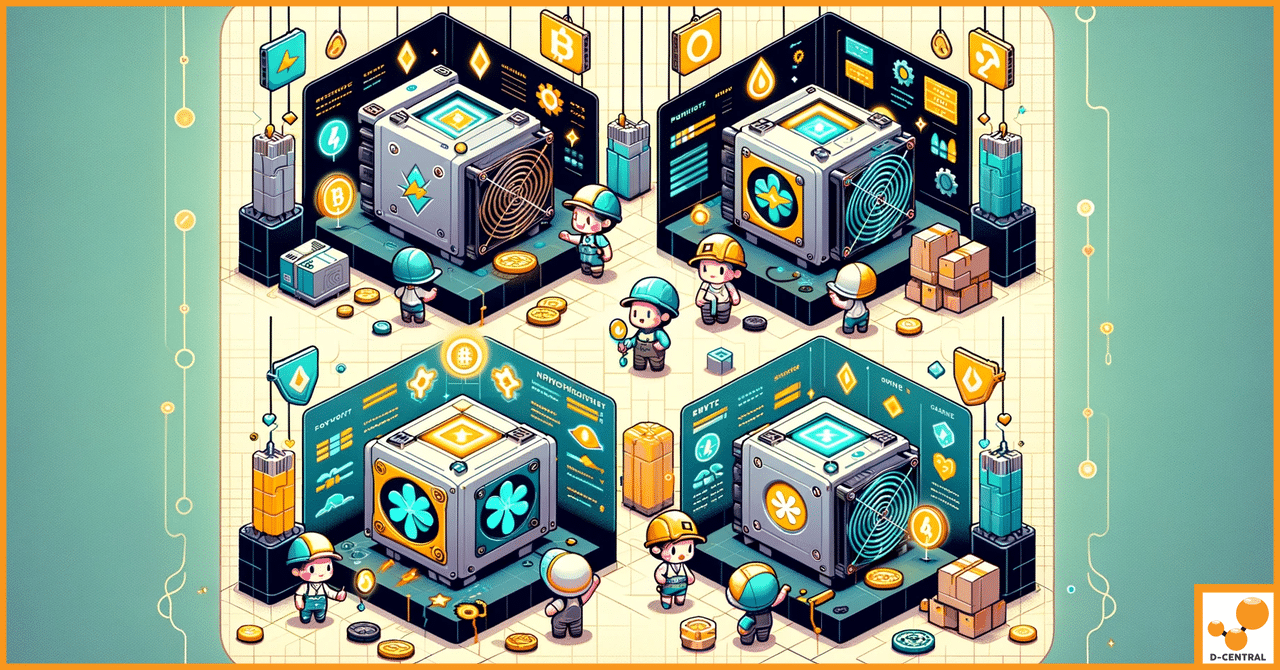
Custom Mining Firmware: Antminer Aftermarket Firmware Overview
ASIC mining is complex and ever-changing, with technology constantly evolving to meet the demands of a competitive industry. One of
4479 Desserte Nord Autoroute 440, Laval, QC H7P 6E2

The realm of Artificial Intelligence (AI) has been expanding at an unprecedented pace, transforming industries and reshaping the way we perceive technology. From self-driving cars to virtual assistants, AI’s influence is pervasive and growing. At the heart of this revolution are key players like OpenAI and NVIDIA, whose contributions are pushing the boundaries of what AI can achieve.
OpenAI, a leading AI research lab, is renowned for its advanced AI models, including the widely recognized language model, ChatGPT. On the other hand, NVIDIA, a name synonymous with high-performance graphics processing units (GPUs), has been instrumental in providing the computational power that fuels these sophisticated AI models.
Recently, these two powerhouses have joined forces in a groundbreaking collaboration. This partnership aims to leverage NVIDIA’s robust GPUs and OpenAI’s expertise in AI development to create a new AI model. This model, unlike any before, is set to harness the power of 10 million GPUs, marking a significant leap in the AI landscape.
This collaboration between OpenAI and NVIDIA is not just a testament to their individual capabilities, but also a reflection of their shared vision for the future of AI. As we delve deeper into this partnership and its implications, we’ll explore the potential breakthroughs, challenges, and the transformative impact it could have on the AI industry and beyond.
NVIDIA, a name that has become synonymous with high-performance graphics processing units (GPUs), has been a driving force in the realm of AI development. While the company initially gained fame for its contributions to the gaming industry, it has since evolved into a key player in the AI space.
NVIDIA’s GPUs are designed to handle complex computations, making them ideal for training and running AI models. These GPUs are capable of processing large amounts of data at high speeds, which is crucial for the development and operation of AI systems. NVIDIA’s GPUs have thus become a cornerstone in AI research labs and data centers worldwide.
Moreover, NVIDIA has been instrumental in developing AI-specific software and hardware. Their CUDA platform, for instance, allows developers to use NVIDIA’s GPUs for general purpose processing, a technique known as GPGPU (General-Purpose computing on Graphics Processing Units). This has opened up new possibilities for AI development, enabling researchers to leverage the power of NVIDIA’s GPUs beyond graphics processing.
OpenAI’s utilization of NVIDIA’s technologies is a testament to the latter’s influence in the AI industry. OpenAI’s AI models, including the renowned language model ChatGPT, are powered by NVIDIA’s GPUs. These models require immense computational power to process and generate human-like text, a task that NVIDIA’s GPUs are well-equipped to handle.
The collaboration between OpenAI and NVIDIA goes beyond just hardware. OpenAI also leverages NVIDIA’s software stack for AI, which includes tools and libraries designed to optimize AI training and inference. This synergy between OpenAI’s AI expertise and NVIDIA’s powerful hardware and software is what makes their collaboration truly remarkable.
As we move forward, this partnership is set to push the boundaries of AI even further, with the development of a new AI model that harnesses the power of 10 million GPUs. This ambitious project underscores the transformative potential of NVIDIA’s technologies in shaping the future of AI.
The partnership between OpenAI and NVIDIA marks a significant milestone in the AI industry. This collaboration brings together OpenAI’s expertise in AI research and development with NVIDIA’s advanced GPU technologies, setting the stage for unprecedented advancements in AI.
The partnership is centered around the development of a new AI model that aims to harness the power of 10 million GPUs. This ambitious project is a testament to the shared vision of OpenAI and NVIDIA to push the boundaries of what AI can achieve. The collaboration is not just about creating a more powerful AI model, but also about exploring new frontiers in AI and setting new industry standards.
A key aspect of this partnership is the use of NVIDIA’s GPUs in OpenAI’s AI models. OpenAI’s ChatGPT, a state-of-the-art language model, is a prime example of this. ChatGPT has been trained on a diverse range of internet text and can generate human-like text based on the input it receives. This requires immense computational power, which is provided by NVIDIA’s GPUs.
NVIDIA’s GPUs are designed to handle the complex computations required for training and running AI models like ChatGPT. They can process large amounts of data at high speeds, making them ideal for the task. The use of NVIDIA’s GPUs in ChatGPT is a testament to their performance and reliability.
As OpenAI and NVIDIA continue their collaboration, we can expect to see more groundbreaking AI models that leverage the power of NVIDIA’s GPUs. This partnership is set to shape the future of AI, pushing the limits of what is possible and paving the way for new advancements in the field.
The collaboration between OpenAI and NVIDIA is set to usher in a new era in the AI landscape with the development of a groundbreaking AI model. This model, unlike any before, aims to harness the power of an astounding 10 million GPUs. This is a leap in computational capacity that is poised to redefine the boundaries of AI.
The new AI model is envisioned to be a supercharged version of OpenAI’s existing models, but with a level of computational power that is orders of magnitude greater. By leveraging NVIDIA’s advanced GPU technologies, this model is expected to process and analyze data at unprecedented speeds and scales. This could potentially lead to AI models that are more accurate, efficient, and capable of handling more complex tasks.
The potential applications of a 10 million GPU AI model are vast and transformative. In the realm of natural language processing, for instance, such a model could lead to AI systems that understand and generate human language with unprecedented accuracy and nuance. This could revolutionize fields like machine translation, content creation, and customer service.
In the field of scientific research, this model could accelerate data analysis and hypothesis testing, potentially leading to breakthroughs in areas like climate modeling, drug discovery, and quantum physics. It could also transform industries like finance, healthcare, and logistics by enabling more accurate predictions and optimizations.
Moreover, the development of this model could lead to breakthroughs in AI itself. It could pave the way for AI systems that can learn more efficiently, generalize across tasks more effectively, and even understand and exhibit aspects of common sense reasoning.
However, it’s important to note that these potential applications come with their own set of challenges and ethical considerations. As we push the boundaries of AI, it’s crucial to ensure that these technologies are developed and used responsibly.
The OpenAI-NVIDIA partnership is a bold step into the future of AI. As we anticipate the development of the 10 million GPU model, we stand on the brink of a new frontier in AI, one that holds the promise of transformative applications and breakthroughs.
While the OpenAI-NVIDIA partnership and the development of the 10 million GPU AI model hold immense potential, they also present significant challenges. These hurdles span from potential GPU stock shortages to financial and logistical complexities.
One of the major concerns is the potential GPU stock shortage. The demand for NVIDIA’s GPUs has been soaring, driven not only by the AI industry but also by the gaming industry and the cryptocurrency mining sector. The production of a 10 million GPU AI model could exacerbate this demand-supply gap, leading to a potential shortage of GPUs in the market.
This could have wide-ranging implications. For instance, it could drive up the prices of GPUs, making them less accessible for smaller companies and individual consumers. It could also impact other sectors that rely on GPUs, such as video game development and scientific research.
The development of a 10 million GPU AI model also presents significant financial and logistical challenges. The cost of procuring, installing, and maintaining 10 million GPUs is enormous. This raises questions about the financial feasibility of the project and the return on investment.
From a logistical perspective, the project requires a robust infrastructure to house the GPUs and ensure their efficient operation. This includes considerations for cooling systems, power supply, and physical space. Managing such a large-scale operation also requires sophisticated software systems for tasks like workload scheduling and fault detection.
Despite these challenges, the OpenAI-NVIDIA partnership is pushing forward with their ambitious project. They are navigating these hurdles with innovative solutions and a shared commitment to advancing the field of AI. As we look ahead, it’s clear that the journey to the new AI frontier will be as challenging as it is exciting.
The OpenAI-NVIDIA partnership and the development of the 10 million GPU AI model are set to have a profound impact on the AI industry. This ambitious project could redefine the AI landscape and bring about both benefits and challenges for other players in the industry.
The development of a 10 million GPU AI model could usher in a new era of AI capabilities. By significantly increasing the computational power available for AI models, this project could enable the development of more sophisticated and capable AI systems. This could accelerate progress in fields like natural language processing, computer vision, and machine learning, among others.
Moreover, this project could set a new benchmark for AI development. It could inspire other companies to undertake similar large-scale projects, leading to a wave of innovation and advancement in the AI industry.
For other players in the AI industry, this project presents both opportunities and challenges. On the one hand, the development of more powerful AI models could open up new possibilities for AI applications. Companies could leverage these advancements to create more effective products and services, potentially driving growth and innovation in the industry.
On the other hand, the project could exacerbate existing challenges in the AI industry. The potential GPU stock shortage could make it more difficult for other companies to access the hardware they need for their own AI projects. Additionally, the high cost and complexity of developing large-scale AI models could widen the gap between large companies with significant resources and smaller companies or startups.
The collaboration between OpenAI and NVIDIA, and the development of a 10 million GPU AI model, represent a significant leap in the field of AI. This project, while ambitious and challenging, holds immense potential. It could redefine the AI landscape, ushering in a new era of AI capabilities and applications.
Looking ahead, the future of AI development appears more exciting than ever. With advancements like the 10 million GPU AI model, we can anticipate AI systems that are more powerful, efficient, and capable of tackling increasingly complex tasks. However, as we push the boundaries of AI, it’s crucial to navigate the accompanying challenges responsibly, ensuring that these advancements benefit all of society.
As we stand on the brink of this new AI frontier, it’s more important than ever to stay informed about AI advancements. The field of AI is rapidly evolving, and staying abreast of these changes can help us understand and navigate the future.
At D-Central, we are committed to staying at the forefront of technology, including AI and Bitcoin mining. We provide a range of services, from consultation and sourcing of mining hardware to hosting mining operations and offering comprehensive mining support. As the AI landscape continues to evolve, we are here to help you navigate these changes and leverage the opportunities they present.
As we look to the future, we invite you to join us on this exciting journey. Together, we can explore the new frontiers of AI and Bitcoin mining, pushing the boundaries of what’s possible and shaping the future of technology.
What is the collaboration between OpenAI and NVIDIA about?
OpenAI and NVIDIA have joined forces to create a new AI model. This model aims to harness the power of 10 million GPUs, marking a significant leap in the AI landscape. The collaboration is set to push the boundaries of AI and set new industry standards.
What is the role of NVIDIA in AI development?
NVIDIA, known for its high-performance GPUs, has been instrumental in providing the computational power that fuels complex AI models. NVIDIA’s GPUs can handle complex computations and process large amounts of data at high speeds, which is crucial for AI systems. NVIDIA also develops AI-specific software and hardware, such as the CUDA platform.
How does OpenAI make use of NVIDIA’s technologies?
OpenAI’s AI models, like the renowned language model ChatGPT, are powered by NVIDIA’s GPUs. These models require immense computational power to generate human-like text, which NVIDIA’s GPUs provide. OpenAI also leverages NVIDIA’s software stack for AI, optimising AI training and inference.
What is the significance of the 10 million GPU AI model?
The 10 million GPU model, unique to the collaboration between OpenAI and NVIDIA, is anticipated to fundamentally change the AI landscape. By harnessing the power of 10 million GPUs, the model is set to process and analyse data at unprecedented speeds and scales. Its applications could revolutionise various fields including machine translation, content creation, customer service, scientific research, and more.
What are the challenges faced in this AI-NVIDIA partnership?
Major challenges include the potential GPU stock shortage, brought about by soaring demands in the AI industry, the gaming industry, and the cryptocurrency mining sector. Other challenges include financial and logistical complexities, such as high costs of procurement, installation, and maintenance, a need for robust infrastructure, and managing a large-scale operation.
What impact would this partnership have on the AI industry?
The partnership can redefine the AI landscape, setting new benchmarks for AI development and bringing both benefits and challenges for other players in the industry. It could lead to a new era of AI capabilities, allow the development of more sophisticated AI systems, and inspire other companies to undertake similar large-scale projects.
How can D-Central help me navigate the rapidly evolving AI landscape?
D-Central is committed to staying at the forefront of technology, including AI and Bitcoin mining. They provide a range of services like consultation, sourcing of mining hardware, hosting mining operations, and offering comprehensive mining support, helping you understand and leverage the opportunities in the evolving AI landscape.
DISCLAIMER: D-Central Technologies and its associated content, including this blog, do not serve as financial advisors or official investment advisors. The insights and opinions shared here or by any guests featured in our content are provided purely for informational and educational purposes. Such communications should not be interpreted as financial, investment, legal, tax, or any form of specific advice. We are committed to advancing the knowledge and understanding of Bitcoin and its potential impact on society. However, we urge our community to proceed with caution and informed judgment in all related endeavors.
Related Posts

ASIC mining is complex and ever-changing, with technology constantly evolving to meet the demands of a competitive industry. One of

Bitcoin mining, the process of validating transactions and securing the Bitcoin network, is a cornerstone of the cryptocurrency world. This

In the ever-evolving landscape of cryptocurrency, Bitcoin has remained the beacon of decentralization and financial sovereignty. However, as its popularity